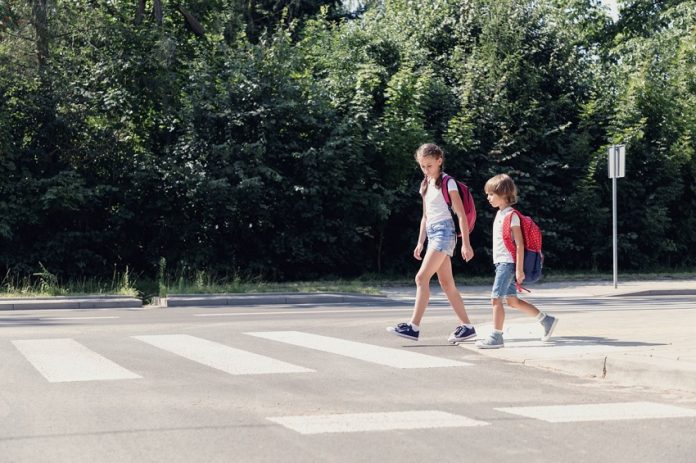Fort Smith, Ark. – As the streets become busier and the flow of traffic increases, pedestrian safety remains a top priority. One crucial yet often overlooked aspect of ensuring one’s safety as a pedestrian is the simple act of making eye contact with drivers before crossing the street. This simple gesture can significantly reduce the risk of accidents and can be a life-saving strategy for those on foot.
Experts agree that making eye contact with drivers is an essential safety measure for pedestrians. When a pedestrian approaches an intersection, it’s common for drivers to be focused on navigating their route or on other vehicles. By making eye contact with a driver, the pedestrian confirms that they have been seen, and the driver can be assured of the pedestrian’s intent to cross. It creates a mutual understanding and a moment of clear communication.
This eye contact is particularly important in busy urban areas where pedestrians and vehicles often share the same spaces. In these settings, distractions are prevalent, and drivers may not always notice pedestrians in time. Pedestrians who take the time to make eye contact help mitigate this risk by ensuring they are visible and that the driver has acknowledged their presence.
For pedestrians, the act of making eye contact with drivers serves as a visual cue that both parties are aware of each other’s intentions. It is especially critical at intersections with no traffic lights or pedestrian signals, where the driver may be uncertain whether the pedestrian plans to cross. In these cases, eye contact establishes an unspoken agreement — the driver will stop, and the pedestrian will cross safely.
Safety advocates emphasize that pedestrians should never assume that a driver will stop, even after making eye contact. While this nonverbal communication significantly enhances safety, it’s still important for pedestrians to use caution. It is advisable to look both ways before crossing, ensure there is a safe gap between vehicles, and remain vigilant until reaching the opposite side of the street.
Additionally, drivers are encouraged to be aware of the pedestrians around them, particularly in areas with heavy foot traffic. By slowing down and staying alert, drivers can create a safer environment for all road users. However, pedestrians should also remember that some drivers might not always be paying close attention, which is why making eye contact before crossing remains a fundamental part of pedestrian safety.
Ultimately, pedestrian safety is a shared responsibility. The act of making eye contact is a simple yet powerful tool that empowers both pedestrians and drivers to ensure safer roads for everyone. By taking a moment to communicate through eye contact, pedestrians increase their chances of being seen and safely crossing the street, reinforcing the importance of awareness, caution, and mutual respect on the road.

